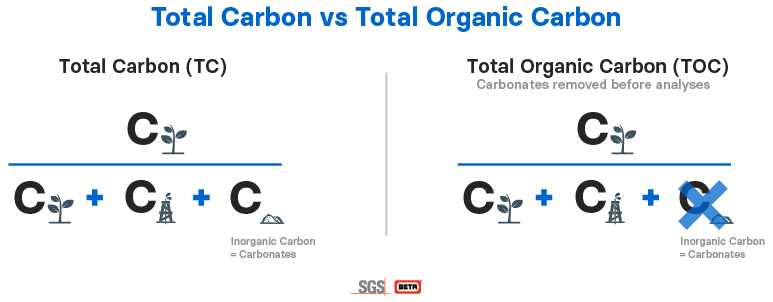Biobased Content in Total Organic Carbon & Biogenic Content in Total Carbon
Modern biomass-derived carbon can be measured within the Total Organic Carbon (TOC) or Total Carbon (TC) portion of solids, liquids, and gases to predict the biobased/biogenic portion of the sample in question. Biobased and biogenic are both defined as materials containing carbon of renewable origin, e.g. new carbon from plant, animal, fungi, microorganisms or marine materials. Typically, biobased is used to define a product of biogenic origin, but these terms are often used interchangeably.

Total Organic Carbon
TOC has traditionally been the standard reporting format for the biobased industry since many products typically contain a large portion of inorganic carbon, usually in the form of carbonates (e.g. limestone, dolomite and other carbon from mineral precipitation often used as fillers or binders) which have little to no radiocarbon activity. According to the current definition of the ASTM D6866 standard, biobased products only consider the TOC portion.
Total Carbon
TC, on the other hand, is often used for the testing of biofuels, gas stack emissions and cement. Within these industries, the net greenhouse contribution of the material or process in question is relevant and thus both the fossil portion and the modern portion must be reported. This is important to identify how significantly the process is impacting the modern carbon cycle (e.g. the carbon footprint). Such measurements are often completed at multiple stages of a product/process life cycle to ensure all potential fossil fuel emissions are accounted for.
Page last updated: March 2024